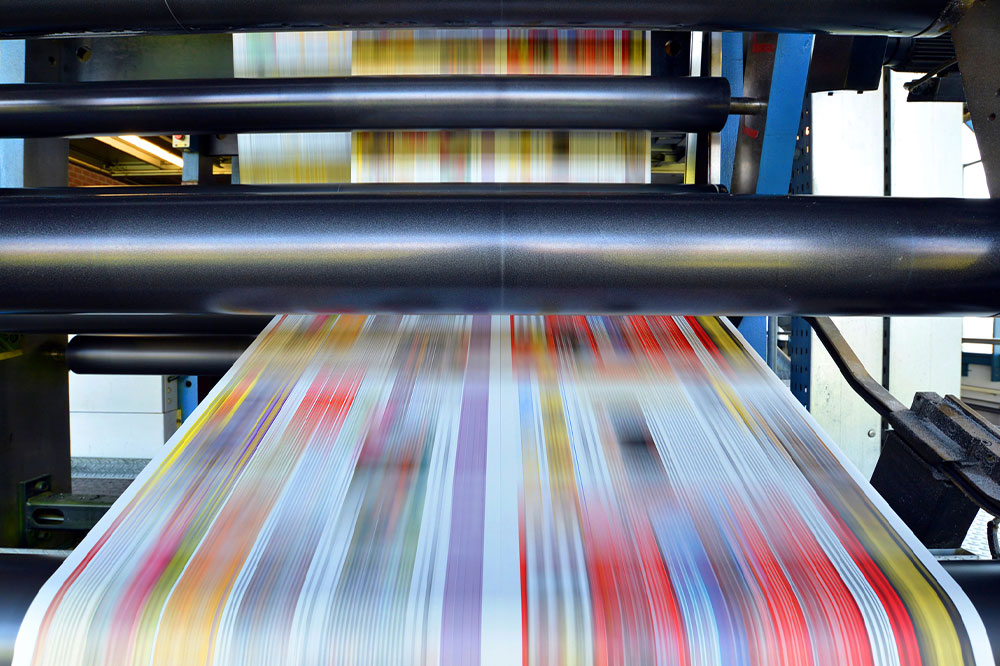
9 tips for effective paper handling
Print production businesses, like newspapers and magazines, purchase a lot of paper. You might think storing and handling paper is easy. After all, it’s just paper. But the truth is that handling large volumes of paper is a real challenge. As you get into the specifics of this subject, there’s always more to learn. If you’re in the print business and are looking for advice on paper handling, we have some tips that might help.
Monitor your waste
Reducing waste is a beautiful place to start if you want to make the most of your paper. There’s no way to tell how much waste occurs until you devise a system for the same. One solution is to track the amount of paper you purchase in a week or month and the amount that ends up in the garbage at the end of that period. Tracking your waste can save you money. You can also analyze the type of paper that lands in the bin, note its thickness and specifications, and then place fewer orders for that type of paper.
Store in a cool, dry area
Everybody has heard it before: Store your paper in a dry, cool environment. This paper-handling tip is quite valid. Moisture content significantly impacts the paper’s life. Reams kept in a cool, dry environment remain in good condition and last longer. On the other hand, those stored in moist warehouses will change texture, becoming wavy.
Use the right paper for the right task
Papers come in different thicknesses, textures, specifications, and styles. Each type is designed for specific purposes. Choosing the right paper for the task at hand will help you get the most out of your resources. For instance, you must use a cover stock coated on one side for book covers, and glossy papers for brochures. Discuss the expectations of your customers while placing orders.
Avoid the heat
Humidity is crucial, but so is temperature. The paper should be stored in a controlled environment, preferably between 68 and 76 degrees Fahrenheit, whether in a warehouse, office, or press room. It should also be kept away from direct sunlight, which might affect the paper’s color and cause issues with printing. To prevent problems, regularly monitor the temperature and humidity in the storage room.
Safeguard the packaging
Paper is transported in packaging created to preserve its moisture level. The best way to store it is in its original package until ready for use. Removing paper from the package on Friday night for use on Monday can also be a mistake. With heat and humidity levels unmonitored over the weekend, the paper’s quality might get affected.
Lay it down
Printers should store reams of paper flat rather than on their ends, and in their original packaging. This can avoid buckling or edge damage. If individual reams are placed on shelves, solid shelves should be used instead of wire shelving to prevent patterning on the paper surface. Damaged paper cannot feed effectively and might cause paper jams, which are time-consuming to fix.
Invest in paper-handling equipment
Different types of paper-handling equipment can help you make the best use of available paper and avoid wastage. A few examples are paper cutters (to trim paper edges symmetrically), letter openers (to open mail), booklet makers (to fold and staple booklets), and drills (to punch holes). You might also want to invest in paper-handling gloves to avoid painful paper cuts.
Find quality suppliers
Good suppliers are hard to find but a huge benefit. They use quality materials in manufacturing, complete your orders on time, and offer paper-handling solutions when issues emerge.
Review your paper needs occasionally
The types of paper you need can change with time, so you must contact your supplier and inform them about your latest requirements. Having every type of paper but the one you need is one of the most annoying situations. It can leave you with large stocks of unused paper in your warehouse and add to your paper-handling woes.




